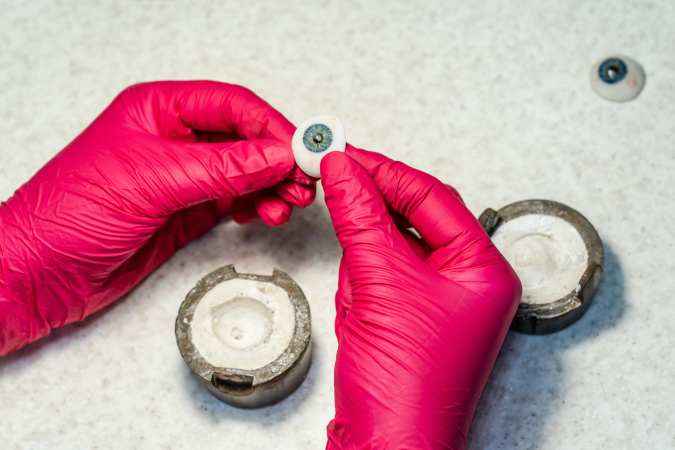
Ocularists design, fabricate and fit ocular prostheses and conformers, and may design and fabricate implants. They consult with ophthalmologists concerning insertion of ocular prostheses. They also paint the iris and pupil of artificial eyes. Cleaning and restoration of ocular prostheses is part of their job. They advise patients concerning the loss of depth perception and the care and use of ocular prostheses. They also repair and maintain fabrication and laboratory equipment.
Average Hourly
$45.89
Range Hourly
$32.82 – $57.60
Average Yearly
$95,444
Range Yearly
$68,273 – $119,823
Other medical technologists and technicians (except dental health) (3219)
Ocular prosthetist
Ocularist
Ocularist apprentice
Ocularist technician
Ocularists require completion of the education program of the American Society of Ocularists and supervised practical training or a five-year supervised practical training program under a certified ocularist.
Average hourly |
Range hourly |
Average yearly |
Range yearly |
$45.89 |
$32.82 - $57.60 |
$95,444 |
$68,273 - $119,823 |
High
Employment outlook is mostly good across provinces. More information is available here.
With experience managerial position in artificial-eye production companies are possible
1-3 year
The ability to study and interpret customer issues, the ability to focus on details, patience and perseverance, organizational, interpersonal and communications skills, multitasking, analytical skills, ability to interpret scientific data, teamwork, fine motor skills, diligence.
Certification by the National Examining Board of Ocularists is usually required.
They usually work on day shifts.
IMGs wanting to become an Ocularist can complete education through the American Society of Ocularists College of Ocularistry and supervised practical training, or a five-year supervised practical training program under a certified ocularist. Certification by the National Examining Board of Ocularists is usually required.